 Are you ready "fore" golf?
Are you ready "fore" golf?
An anterior cruciate ligament (ACL) sprain is a tear of one of the four major ligaments of the knee. The diagnosis of an ACL tear is usually made on physical examination but MRI can be helpful, especially when the patient is too swollen or guarded to allow a thorough examination. The MRI is also needed to diagnose any associated meniscal or cartilage damage. The ACL will not heal on its own but, most people can return to normal daily activities after an appropriate rehabilitation program. Despite this return of normal daily function, ACL deficient knees are at risk for progressive meniscus and cartilage damage from abnormal knee mechanics. For those who want to return to sports that require pivoting, cutting, and jumping and landing, surgery is usually required. Surgery also is recommended for ACL injuries combined with other ligament, meniscus, or cartilage injuries.
Learn More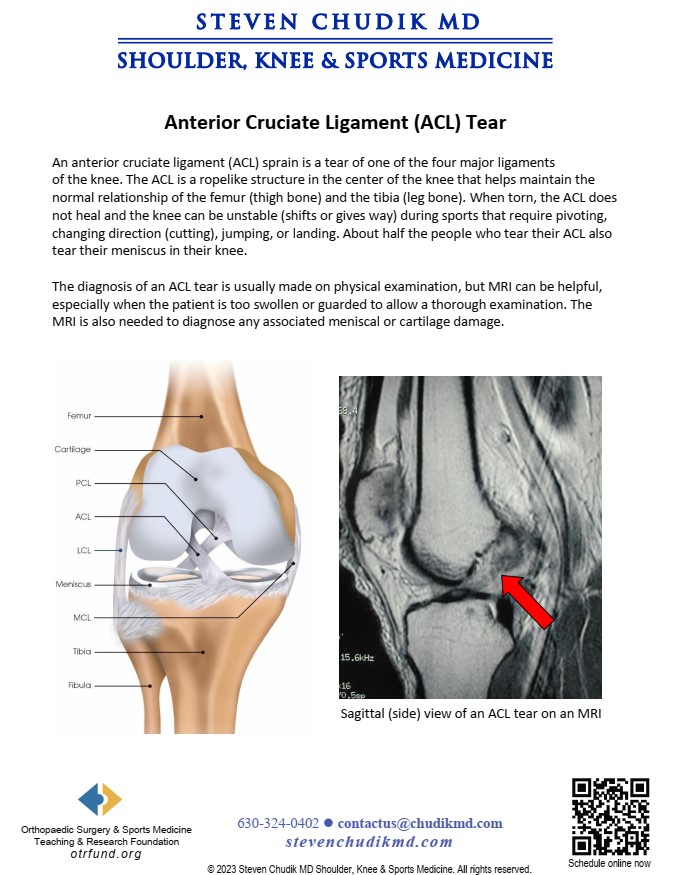
Females appear to be particularly susceptible to anterior cruciate ligament (ACL) injuries. In this published report, Dr. Steven Chudik examines the need for identifying, diagnosing the severity of the injury, discussing treatment and management options to provide the best care.
Learn More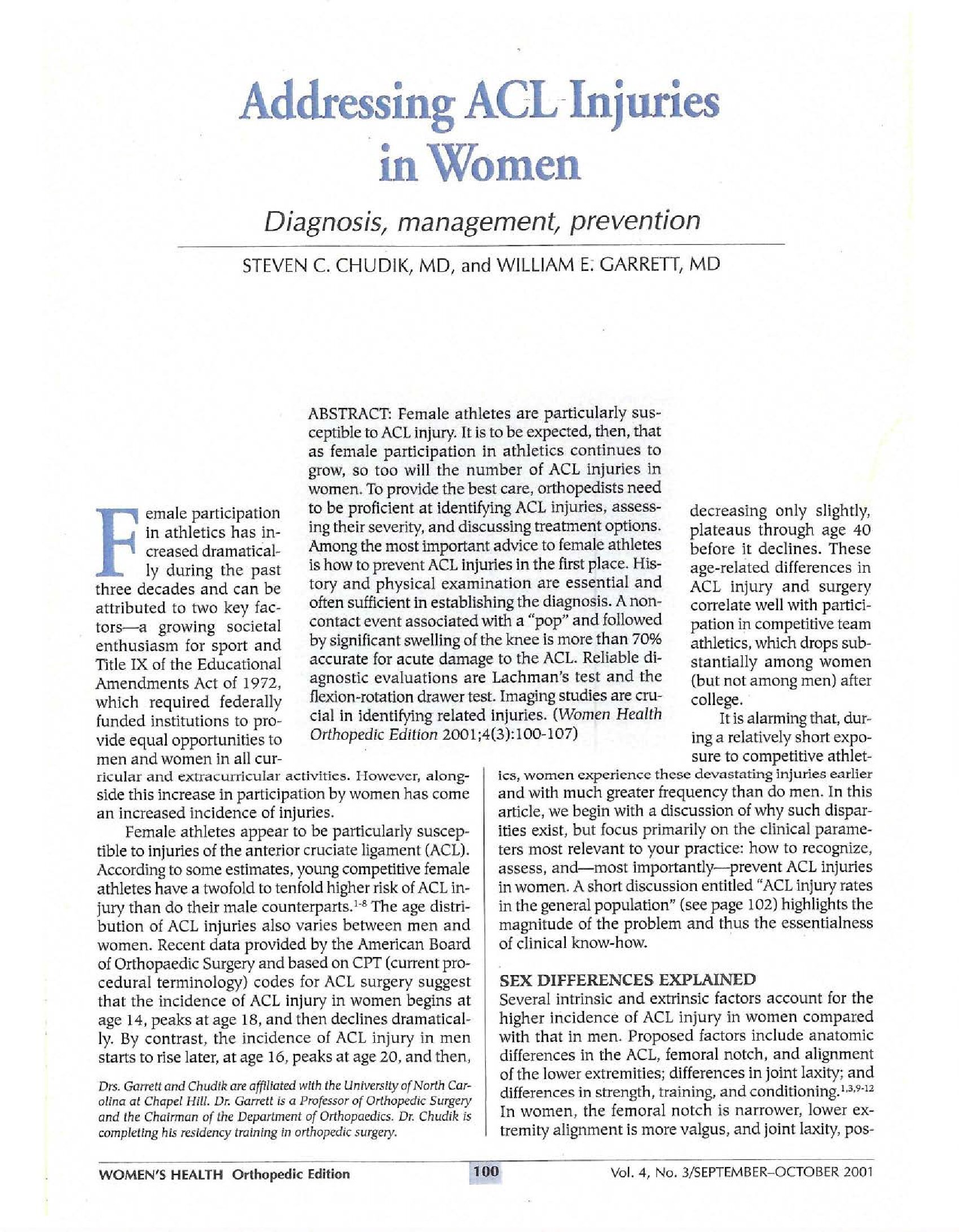
Lesser knee flexion angles and large eccentric quadriceps forces have been implicated in the mechanism of non-contact ACL injuries. We hypothesize forced early knee flexion against an active eccentric quadriceps contraction will alter tibiofemoral motion and increase strain in the ACL. With the largest eccentric quadriceps force applied, the strain of the anteromedial bundle of the ACL was minimal at full extension, increased to maximum at an average of 36.6 7.1 degrees of knee flexion (p<0.05) and remained elevated with further flexion. This resulted in a peak strain of 0.049 0.026. With the largest eccentric quadriceps force applied, the strain of the posterolateral bundle of the ACL was elevated at full extension, increased to maximum at an average of 25.8 7.3 degrees of knee flexion (p=0.1), and decreased with further flexion. The peak change in strain was 0.009 0.035.
Learn More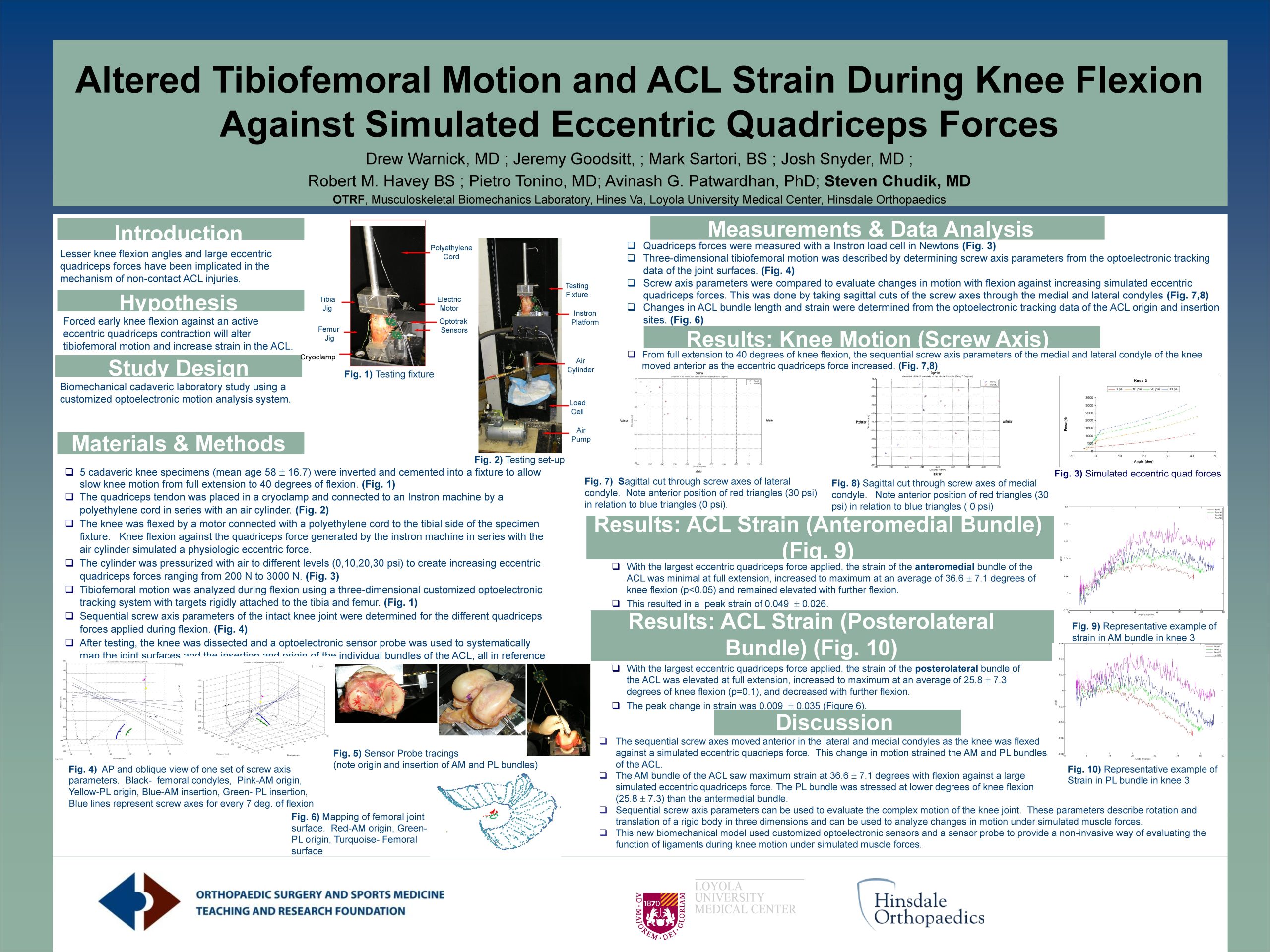
The force responsible for noncontact anterior cruciate ligament (ACL) injuries remains controversial. Published results show that 70 to 80 percent of ACL injuries occur via an indirect force and are classified as noncontact injuries . Although extrinsic forces involved in noncontact ACL injury are well defined, the role and source of an intrinsic force remains controversial. The patella tendon to tibial shaft angle causes an anterior tibial shear force with quadriceps activation. We hypothesize that given the proper circumstances, an intrinsic force generated by a physiologic quadriceps contraction, with the knee in slight flexion, can cause significant anterior tibial displacement and injure the ACL. Aggressive quadriceps loading, with the knee in slight flexion, produces significant anterior tibial translation and ACL injury. This suggests that the quadriceps is the intrinsic force in noncontact ACL injuries, producing a model for further investigation.
Learn More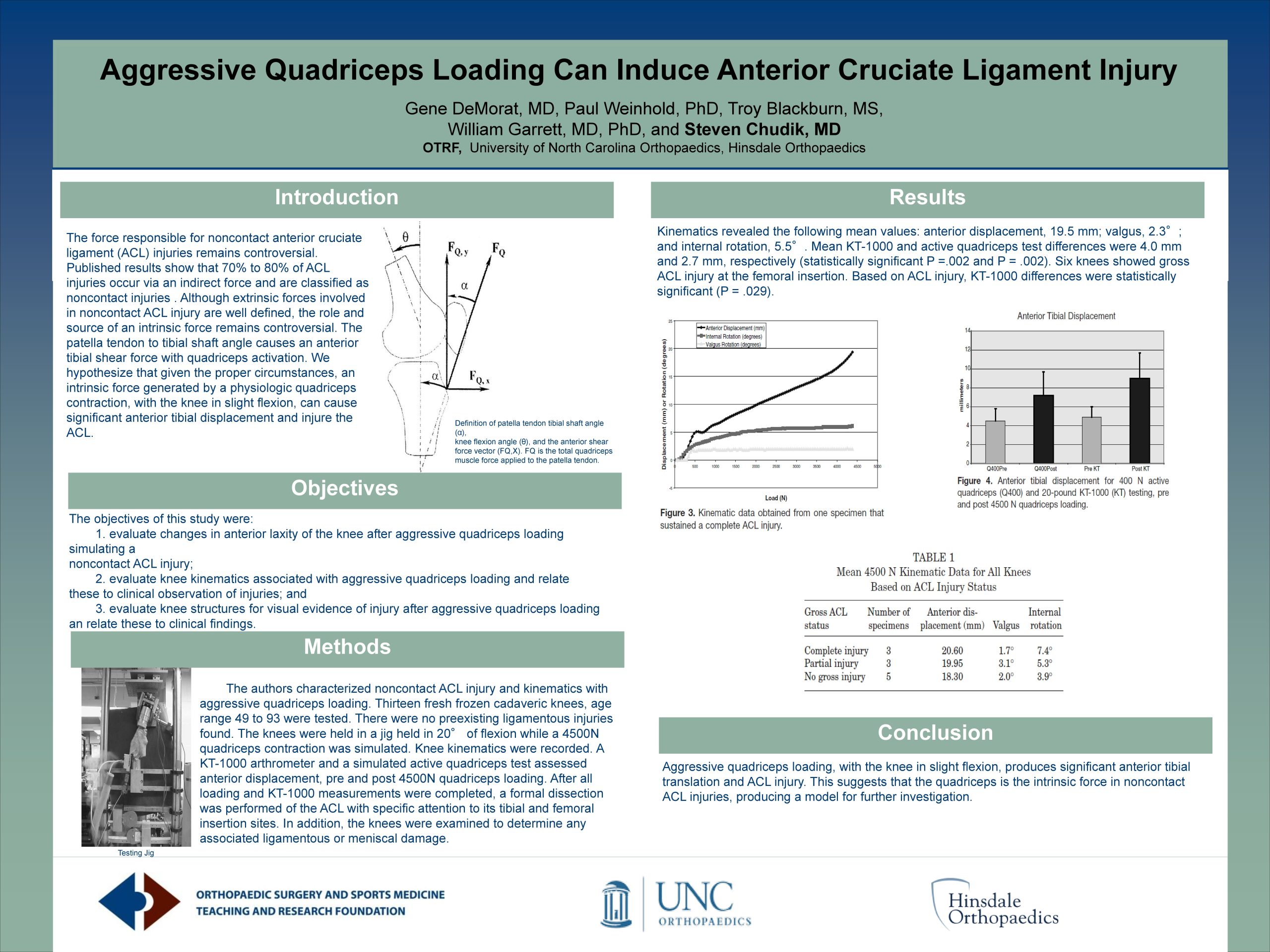
Published in the American Journal of Sports Medicine, Vol 32, Number 2, 2004, pp 477-483
Learn More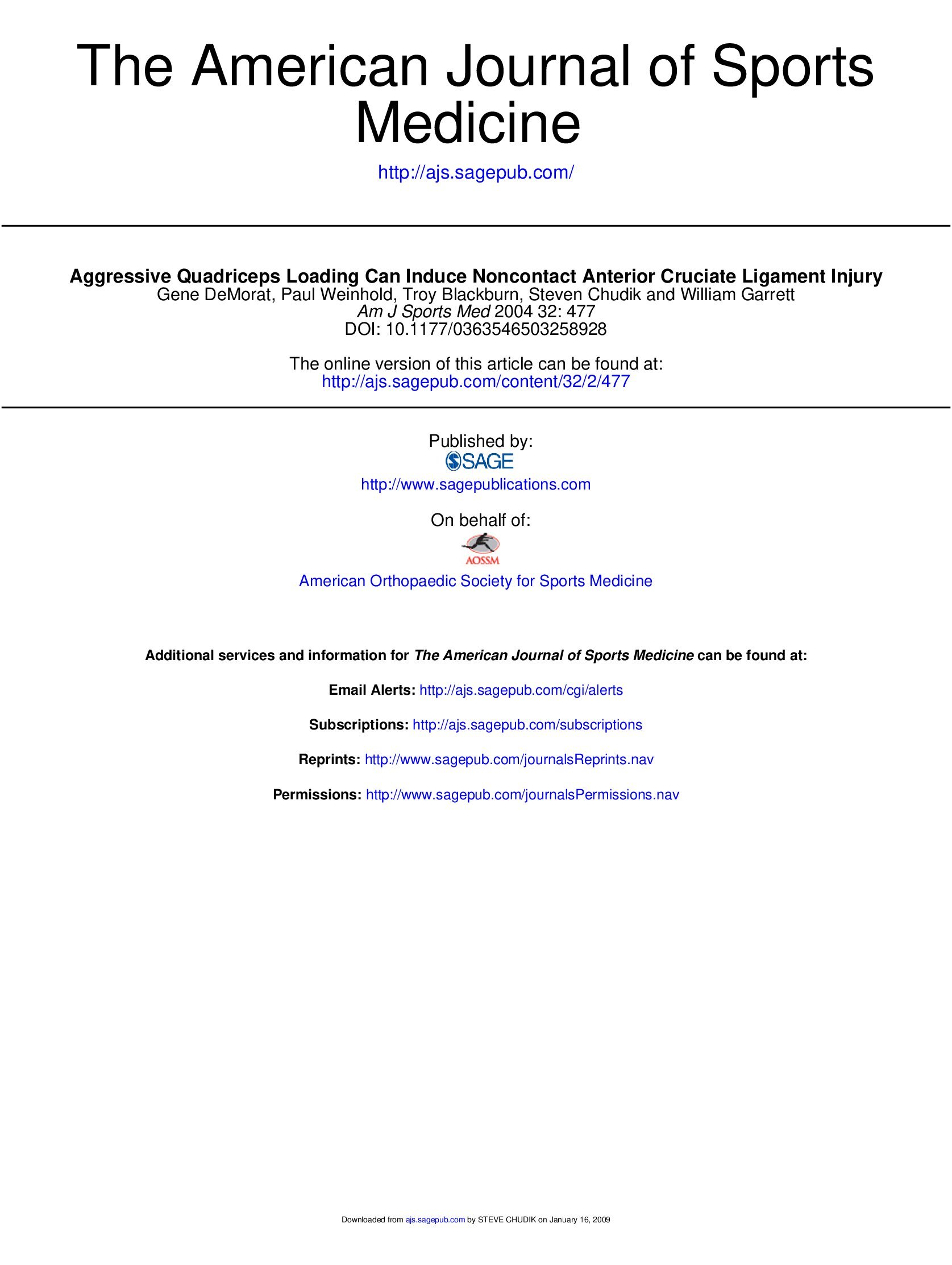
Content provided by Dr. Chudik not to be used for diagnosis and treatment. You can receive a proper evaluation and diagnosis by making an appointment with Dr. Chudik